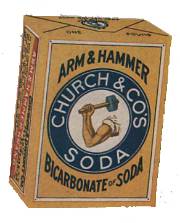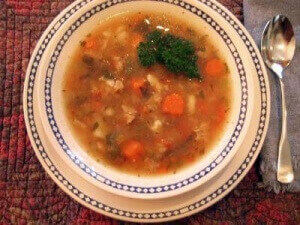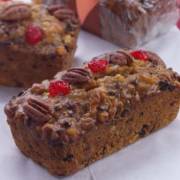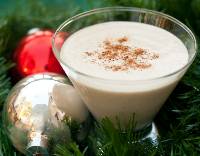December 30 is National Bicarbonate of Soda Day
 It’s National Bicarbonate of Soda Day! Yes, that’s right: baking soda has its own day. As we shall see, this hardworking substance earns at least one holiday’s worth of celebration.
It’s National Bicarbonate of Soda Day! Yes, that’s right: baking soda has its own day. As we shall see, this hardworking substance earns at least one holiday’s worth of celebration.
Sodium bicarbonate is a chemical compound with the formula NaHCO3. A component of the mineral natron, it is a white, odorless, water-soluble crystalline solid that is found dissolved in many mineral springs.
Ancient Egyptians used natron as a cleanser. In 1791, French chemist Nicolas Leblanc introduced sodium bicarbonate in its modern form. Fifty-five years later, two New York bakers, John Dwight and Austin Church, began to manufacture and sell the compound we know as baking soda today under the name John Dwight and Co.
In 1867, the company became Church and Co. and debuted its Arm & Hammer packaging, depicting the hammer-wielding arm of Vulcan, Roman god of fire. It was marketed mainly as a leavening agent for use in baking until 1925, when the company published a booklet called A Friend in Need, touting baking soda as a “proven medical agent.”
Modern quack science makes extraordinary claims regarding baking soda. A Google search for “sodium bicarbonate cures cancer” returns 82,600 results; 7 of 10 on its first page advocate the treatment. As a thought experiment, ask this: if one (or many) doses of baking soda can “alkalinize” our blood and that in turn can cure cancer, what would the acid in a glass of orange juice do to our blood? Surely, adding a shot of vodka would be a death sentence, wouldn’t it?
While baking soda cannot differentiate between normal and cancer cells in our bodies, it can treat indigestion and make our laundry smell fresh, relieve insect bites, polish silverware, clean crayon stains from walls, remove grease from pans and oil from garage floors. It also kills ants and roaches, whitens teeth, freshens breath and exfoliates skin.
Here are five more uses:
- Keep cut flowers fresh longer by adding a teaspoon of baking soda to the vase.
- Make a paste with water or add to bath to relieve the pain of sunburn.
- Add a teaspoon to the water when you soak beans to neutralize their gassy effects.
- Throw onto small grease or electrical fires to extinguish them. Do not use on fires in deep fryers; the sudden release of carbon dioxide may cause the grease to splatter.
- Unclog a drain by pouring in 1/2 to 1 cup of baking soda, and then 1/2 to 1 cup of white vinegar. Let sit for five minutes—covered, if possible. Follow with a gallon of boiling water.
There are hundreds of uses for this amazing product. Discover a few more and have a happy National Bicarbonate of Soda Day!
![]()


 ptians buried loved ones with fruitcakes in the belief they were essential for the journey to the afterlife. An early Roman recipe combined barley mash with raisins, pine nuts and pomegranate seeds. In the Middle Ages, honey, spices and preserved fruits were added to the basic formula. Fruitcakes were carried during the Crusades due to their nutritious ingredients and resistance to spoilage.
ptians buried loved ones with fruitcakes in the belief they were essential for the journey to the afterlife. An early Roman recipe combined barley mash with raisins, pine nuts and pomegranate seeds. In the Middle Ages, honey, spices and preserved fruits were added to the basic formula. Fruitcakes were carried during the Crusades due to their nutritious ingredients and resistance to spoilage.